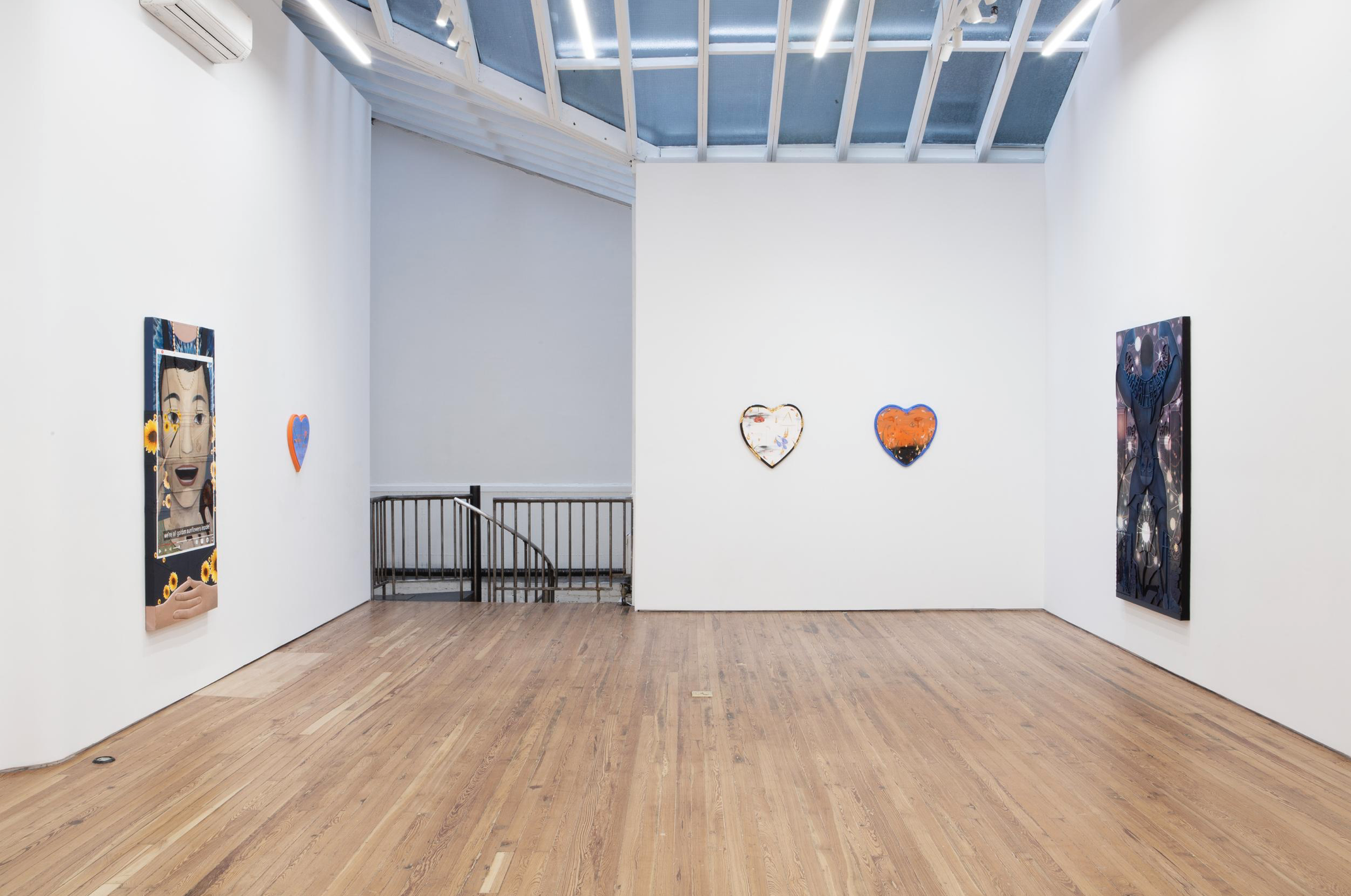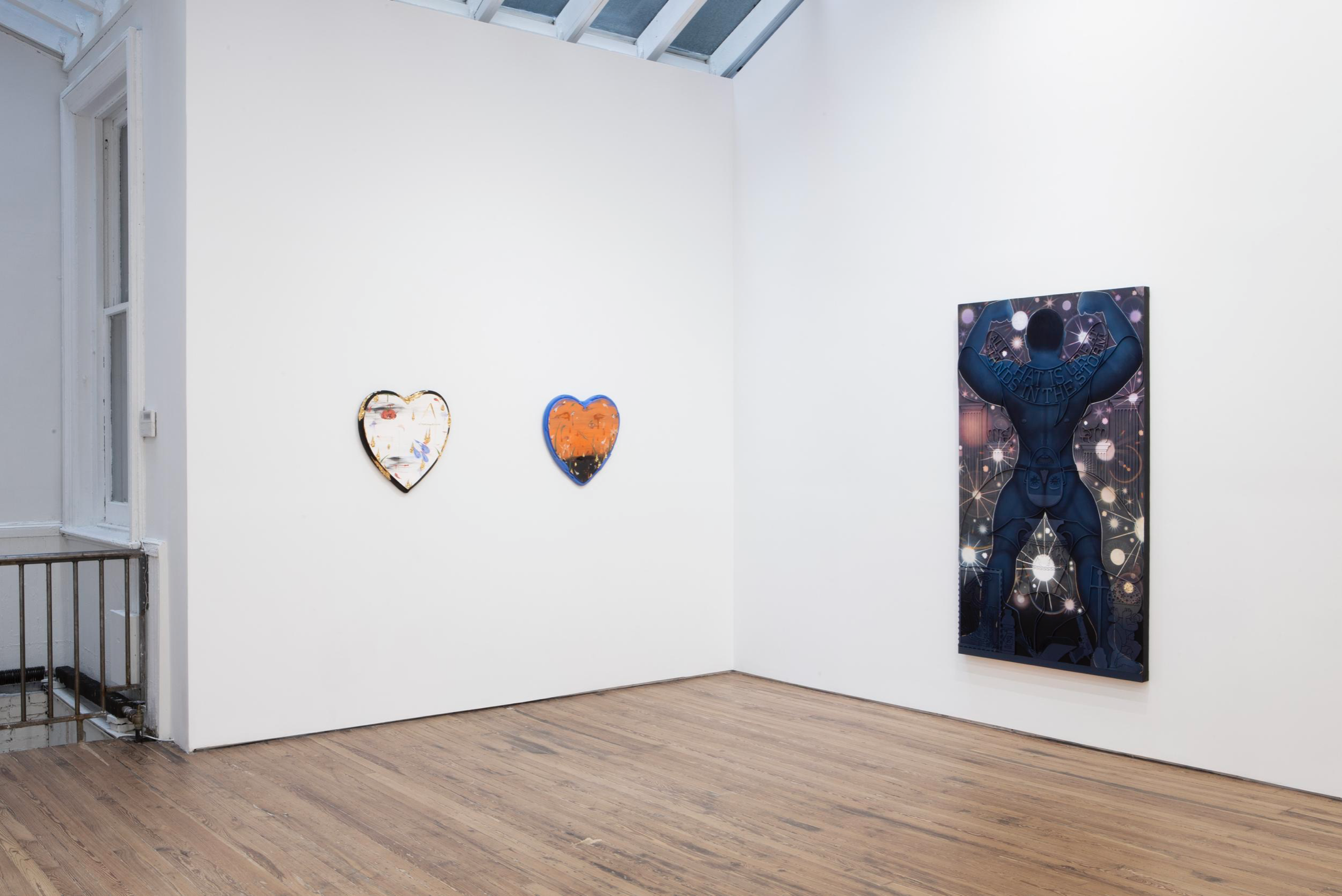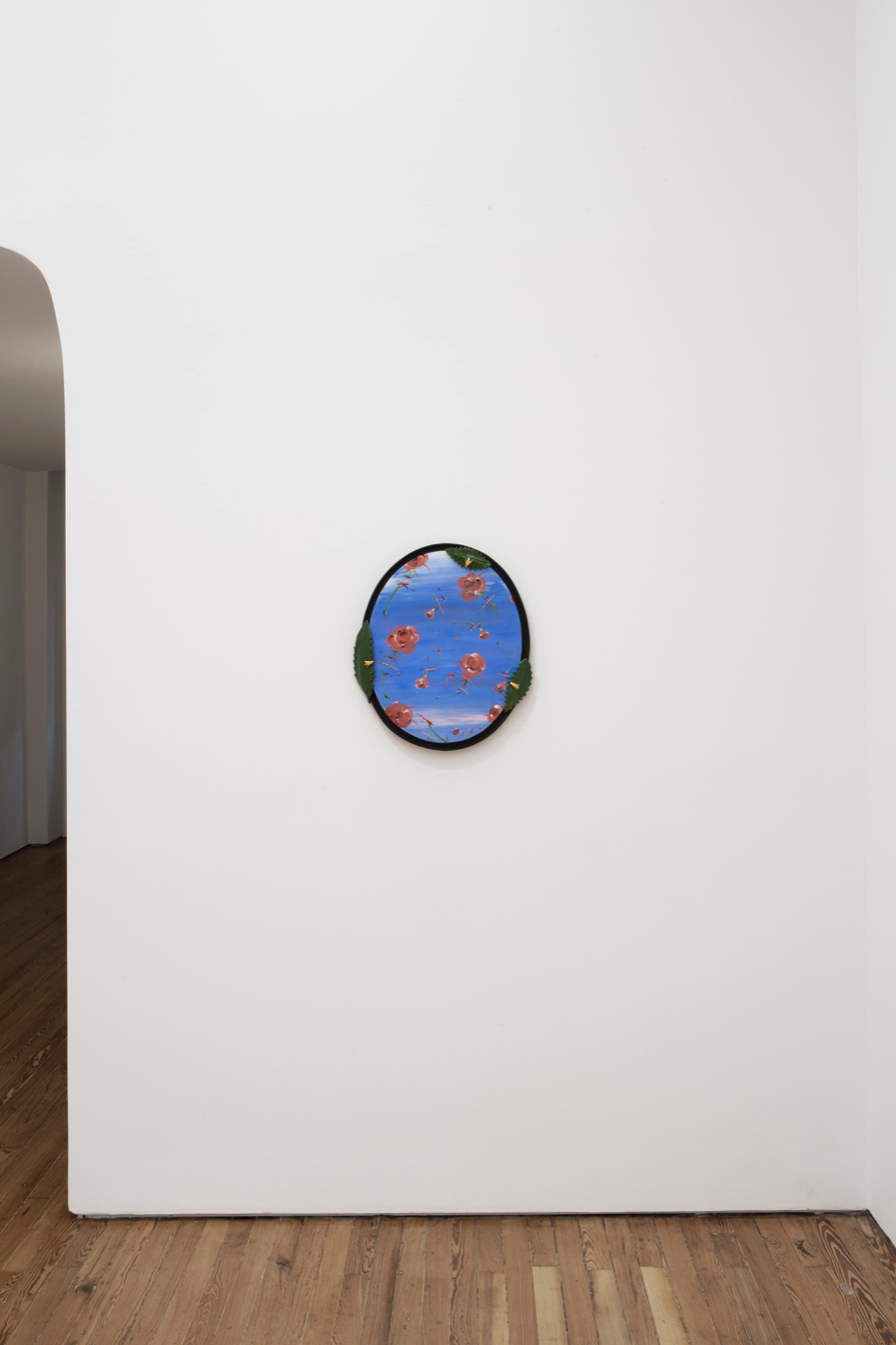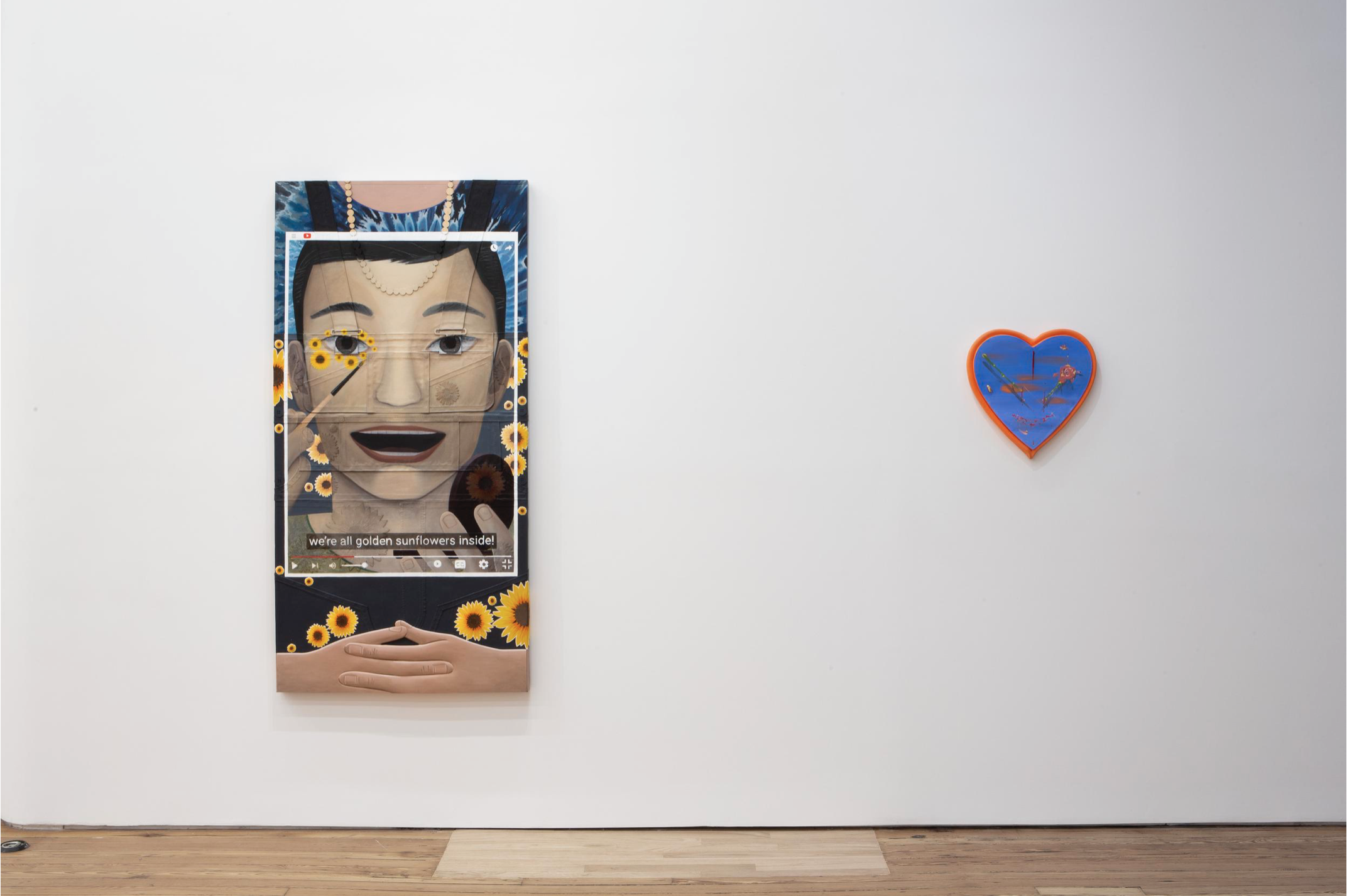Alex anderson and michael stamm
dELI gALLERY, nEW yORK, ny
March 31 – May 7, 2022
Deli Gallery is pleased to present a two-person exhibition with works by Alex Anderson and Michael Stamm.
Using twee Millennial and pop-cultural aesthetics, macabre symbolism, and Classical art historical references, Alex Anderson’s earthenware works consider how self-perception is shaped today. By taking up ceramic as his primary material, Anderson considers the multivalency of the medium: in terms of its immediate accessibility, its place in Chinese artistic traditions, its associations with narrative through ceramic friezes and the kraters, and the place of porcelain in European imperialist decor. In doing so, he uses the material as a cipher through which to consider his own Black, Japanese, and gay identity, and the weight of what it means for him to be using this medium as a mode of expression.
The works on-view take on the forms of vanity mirrors, serving platters, and hearts; the frames on each piece, some adorned in gold luster, evoke the Baroque frames on Classical artworks in museums or gilded-gold decor in European palaces. Glazed and hung on the walls, the works operate between painting and sculpture to upend persistent art world hierarchies around ceramic as a medium.
The facades of Anderson’s works are adorned with expressive brushstrokes that reference Japanese and Chinese ink wash painting, with few representative markers other than roses, leaves, and occasionally, text. The foliage calls back to memento mori and vanitas paintings from northern Europe in the 16th and 17th centuries, yet Anderson also paints these symbols with a campy sensibility. In these works, Anderson is using pattern-and-decoration as code: the roses and leaves are strategically placed as stand-ins for eyes and lips, with the red and blue drops indicating blood and tears to denote passion and pain. The works depict the emotive vulnerability of self-presentation in the age of social media, and by resisting representing an actual figure in these works, Anderson is also taking up opacity as a mode of protection. One might just as easily see the surfaces of his works referencing filter apps to evade easy subjectivity while also indulging and celebrating the self.
The works consider the contemporary slipperiness between narcissism and self-criticism, and between self-love and self-harm. In Perfect (2022) the work’s title is painted in gold luster on the surface in a style that conveys that it was carved by a razor into skin, with drips of luster at the end of each letter implying bleeding. Another work, Dark Portrait with a Gazing Pool (2022), nods to the myth of Narcissus and the relationship between vanity and the despair of unfulfilled desires. Meanwhile, a form that appears like an exaggerated mouth evokes dark histories around minstrelsy. Here, Anderson is commenting on the white gaze, both his own experience of it in the everyday, as well as its presence in art history, a knowing nod to the perceptions of how he might be seen as a “little Black boy [who] makes imperial porcelains.” 1 Yet the presence of the gold bees, a vanitas symbol for regeneration, stakes his claim his right to self-expression and a perception of self that falls outside of the white heteronormative value systems.
Michael Stamm’s new paintings continue his considerations around present-day cultural politics and historical and contemporary iconography. His new works operate between the analog and digital, pop and pattern-and-decoration, incorporating 3D-print and laser-cut elements into his paintings, which illustrate familiar online entities and amalgams of contemporary icons. Highly-rendered so that the surfaces of his works appear flat in spite of his layered collaging, the frontality of the works create the effect of tableaus.
Strongman evokes WPA murals, woodcuts, and propaganda posters. The central figure of the painting stands in a heroic pose, cameras flashing in his direction. Behind him, the specter of a smiling man with a shaved head bends unnaturally and demonically backwards to wink at us. The work’s text, a quote from the Nazi Heidegger, appears in an imposing speech bubble that emanates from the smiling man’s mouth while the other laser-cut wood pieces that cover the canvas depict the flotsam and jetsam of aspirational masculinity, white supremacy, and Neo-Nazism: a Gatorade bottle as a symbol of body-building culture; a gun and sword as tools for patriarchal violence. Meanwhile, a Grecian krater and columns, with two massive fists punching downward, and Hans Holbein’s iconic portrait Henry VIII, litter the background and lie at the central figure’s feet, signify power, celebrity, and the hegemonies of art history. A sculpture of Atlas, which sits at the lower-right of the painting seems to convey the self-aggrandizement and self-victimization of white supremacists. Here, Stamm is staging the ways in which white supremacy and patriarchy persist, both through nostalgia for the past and in more coded, insidious ways.
Stamm’s Influencer series stands in contrast to Strongman. These works take on a more optimistic view of online personalities. Denim overalls wrap across the boards of each work, acting as the surfaces for these paintings. In these works, Stamm is creating a through line about historical and current-day labor, as well as the relationship between labor and culture. Denim jeans and overalls have strong ties to blue collar work and physical labor, from construction, to factory work, to mining, as well as associations with the American fashion industry. Each of these paintings depicts a close-up and cropped portrait of an online influencer that one might come across or follow on TikTok, framed in white. The effect is that of a paused video of a makeup or nail tutorial, as viewed through a smartphone: each influencer is in mid-speech, their mouth open as they apply makeup to their face or show off their newly-manicured nails to their audience.
Each framed face is painted over the body of another entity, which Stamm hints at through the 3D printed embellishments, patches, and appliques in the paintings as well as his titles: Influencer X Farmer, decorated with 3D printed wheat stalks; Influencer X Mechanic), adorned with military patches, and Influencer X Hippie, which covered in sunflower appliques. Each influencer’s face merges with the body behind them, indicating that Stamm sees influencer marketing— which is dominated by Gen-Zers and young Millennials and is often dismissed as frivolous— as skilled and laborious work. This labor is often taken on by those in marginalized positions, often by people of color and those who identify as queer, trans, or nonbinary. Stamm depicts these influencers with both a deep seriousness and empathy, aware that they are driving contemporary culture and capital. These influencer portraits appear flat and cartoonish, like contemporary screen icons who appear almost emoji-like. This style speaks to the construction of imagery today as it oscillates easily between the real and unreal, the physical and digital. Rather than considering this oscillation with a reductive judgement, the artist is interested in the spaces between authenticity and affect. These works seem to celebrate contemporary freedoms around the construction of the self, femme labor, open-source networks of skill-sharing, and a porousness and fluidity that is achieved through the foregrounding of difference outside of binary constructs. Stamm seems to be reveling in all of this through his chosen medium—painting is his form of drag.










